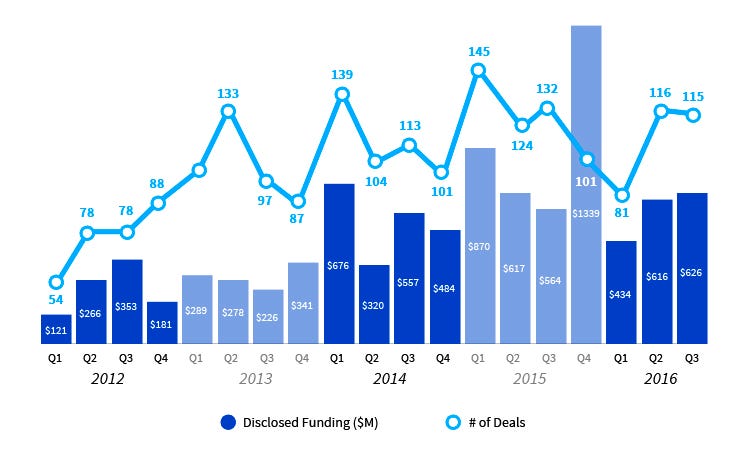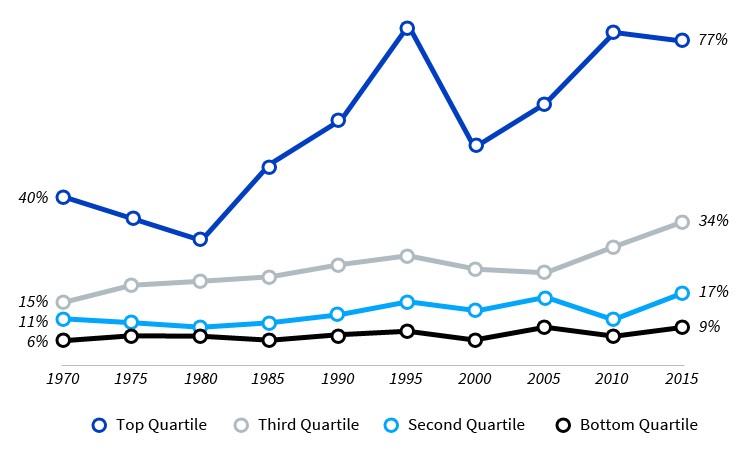
by Guido Kovalskys
Dear Guido,
My friend and I are former teachers who now work in tech and are thinking about quitting our day jobs to start an edtech company. We have identified the problem we want to address, we think we have a solution, and we have the start of a great team. The problem is, we’re worried about the complexity of the education market and can’t decide whether to “take the plunge.” Is now a good time to start an edtech company?
— Ed-Curious
Dear Ed-Curious,
If you want to work in a meaningful industry and make an impact on students’ lives, then as far as I’m concerned, it’s always a good time to start an edtech company.
Five years ago, when my co-founders and I asked our advisors whether we should launch an edtech company, the answer, across the board, was “absolutely not.” We were told that it’s impossible to monetize in the K-12 system, that teachers wouldn’t trust us, and that schools weren’t going to deploy technology with any kind of scale. Starting an edtech company, they warned us, was venturing into “Death Valley” — soon we would join the graveyard of other edtech startups that tried to sell to teachers, schools, or districts.
Despite the Death Valley warnings, we founded Nearpod in 2012. In many ways, our advisers were right: 2012 was a tough time to start an edtech company. There was great uncertainty around technology in the classroom, and a lot of edtech products were being met with distrust and an unwillingness to pay.
“You will die in the Death Valley of edtech startups that try to sell to teachers, schools, or districts. You are not the first ones to try this.”
— Encouraging words from a would-be Nearpod investor
But we’re glad we did it, and there’s one big reason why: We fell in love with the classroom. When we saw the immediate impact Nearpod was having on day-to-day learning, we realized we were more than willing to embrace the complexity of the K-12 space — as long as it meant being an active part of so many special moments for teachers and students.
This emotional investment in education is imperative for a career as an edtech entrepreneur. If sitting down to read and respond to every tweet from teachers about your product before you go to bed (my nightly routine) energizes you and makes you excited for tomorrow, this might be the perfect space for you.
We also had a hunch that a market opportunity would emerge. We are parents too, and back in early 2012, some of our children were entering school and beginning to experience the many inconsistencies and inequities of the US public education system. We were optimistic about the growth of tablets in classrooms and were noticing that investors were increasingly interested in a double bottom line model. Big problem, growing market, investor interest… had we hit a trifecta?
I am proud to say that today our product is loved by teachers, who put Nearpod in front of over 250,000 students every day, and that we’ve been able to monetize that teacher love — with a healthy business that generates several million dollars in annual recurring revenue (“ARR”).
And the conditions are still ripe for new entrants. There is a robust market opportunity today for edtech entrepreneurs to shape the presence of technology in classrooms. Let’s a take a look at the market in 2017:
1. Big Problem
The problems with K-12 education are larger than ever before — impacting more than 55 million students in the US every day. New challenges face the system while old inefficiencies and inequalities persist; our system disproportionately underserves specific groups of students. Today, 77% of students from the top quartile of family income attain a bachelor’s degree while only 9% of students from the bottom quartile do the same. This gap of 68 percentage points is wider now than it has ever been. (In 1970, the gap was “only” 34 percentage points.)
Receipt of a Bachelor’s Degree by Age 24 (1970–2015, by Family Income)
In addition to this widening achievement gap between socioeconomic classes, we’re seeing that educators are stuck using outdated tools and methods to address an increasingly diverse landscape of students. The space is begging for innovation, collaboration, and new solutions.
2. Growing Market
Last year, 10.5 million devices were sold to US schools, with 1 in 5 schools implementing a 1:1 student-to-device ratio. The investment in hardware is opening up a promising new space for entrepreneurs to build software and help define how technology will be used in the classroom.
Devices Sold to U.S. K-12 Schools, 2012–2016

One other question to ask when evaluating a market is: who are the legacy players and how ready are they to be disrupted? For those trying to break into the content business and compete with the textbook industry, for example, this recent article might help convince you that now is the right time: “ Pearson shares fall 30% on profits and dividend warning.”
3. Investor Interest
In 2015, edtech companies raised a record $1.85 billion in funding across 198 deals in the US, and $3.12 billion across 491 deals globally. And while the funding market in 2016 cooled off a bit following broader technology investing trends, the pattern of growth over the long term is clear: increased investment from venture capital firms and other funders means more resources for entrepreneurs to innovate and build groundbreaking tools.
Global Edtech Financing, 2012–2016, by Quarter

In short, now is a great time to start an edtech company. The classroom is a constant source of inspiration and excitement, and I promise there is no better reward than building tools for teachers and students. Come join us — it’s time to get to work!

